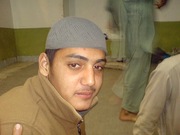Welcome To My Homepage
my city
Landi Yarghajo (from Yar-gha-jo, "point where five rivers meet") is a village in Peshawar, Pakistan. It is also a perception among the elders that Yarghajo is actually the name of the river that flows in the village. The village is largely populated by Qazi, Arbab, and Ghorghust groups. Some local Arbabs also call the village Landi Arbab.
It is situated in the suburbs of the Peshawar City and is considered one of the old villages in the region.[citation needed]
[edit] History
In Landi Yarghjo there are a few historical places, including the Bachai Lara ("Royal Path"), said to have been travelled by a Mughal emperor. Another historical place in the village is Ghazi Baba[clarification needed] situated beside Bachai Lara. According to legend, Ghazi Baba was mortally wounded in battle,[when?] and was carried away by his horse to Bachai Lara where he died. Formerly, an urs (Sufi saint death anniversary) ceremony was held at his tomb, but the practice is defunct.
Apart from Ghazi Baba, other military figures buried in the village include Qazi Asmatullah, who was killed in the Rajasthan Sector during the Indo-Pakistani War of 1971.[citation needed]
During the 1965 Indo-Pakistan War, the village was bombed by Indian aircraft in response to small-arms fire coming from the village.[citation needed]
The village gained public attention when engineers Qazi Jamshed and Qazi Sajjad flew over the suburbs of Peshawar in 1985, using the first home-made power glider in Pakistani aviation history. They showed their skills everywhere, flying on 23 March to celebrate Pakistan Day. Later Qazi Farhad died while demonstrating a flight and was later awarded Hilal-e-Ahmar by the government of Pakistan.[citation needed]
Listing Site Updates
Ghorghushti ( غورغشتى) is one of the largest towns of Chhachh in Attock District and is on the border of North-West Punjab (Pakistan), and Hazara in Pakhtunkhwa/North-West Frontier Province. The official spelling is Ghorghushti, but alternative, incorrect, spellings include: Ghurghushti, Ghourghushti, Ghaurghashti, Ghaur Ghushti, Ghurgushti, Ghourgashti or Ghaurghashti. In the Pukhto language it is called Ghorghushto.
The people who live here are predominantly Pashtun, speak Hindko with some speaking [[Pashto and follow the Pashtunwali (locally called Pathan Walgi) code of conduct.
It is the birth place of the famous Pashtun warrior Nawab Najabat Khan, also known as Najaf Khan. Najaf Khan was born in Mohalla Ishaq Zai in a house near the pond. Najaf Khan left this town to search for work in larger cities of India. He first went to Sardar Dawood Khan of Lahore to seek work who sent him to the service of Subidar Meer Minnoo of Lahore. There he made a name for himself after wrestling one of the infamous giants, whom he had killed in a bout. This was an era of constant battles, and he stood out as an accomplished fighter and leader. During one of the battles, he saved the life of Meer Minno, whilst others were fleeing the battle ground he stood firm with courage. He defeated his enemies, and was rewarded with a number of horses and men. A couple of years later, he left for Karnal where he fought more battles against Hill Rajas. He recalled reinforcements from Ghorghushti and built a fort in 1759 in Kunjpur.He became a Nawab after winning the respect of the Imperial leadership in Delhi. Amidst appeals from Muslim leaders like Shah Waliullah, Ahmad Shah Abdali invaded India to face the formidable challenge posed by the Maratha Confederacy. Ahmad Shah Abdali asked for help from his fellow Muslim Nawabs and Jagirdars against the armies of Marathas and Jats, who were killing and occupying Muslim areas following the death of Mughal emperor Aurangzeb. Nawab Najabat Khan joined the army of Ahmad Shah Abdali and participated in the Third Battle of Panipat, there at the hands of Marathas he was killed on 17 January 1761. His direct descendent later joined the British and after the partition of India, the last Nawab of Kunjpura, Nawab Ibrahim Ali Khan, migrated to Lahore in Pakistan, and died in 1953.
The Salar (Sar) Khel tribe consider themself to be related to Nawab Najabat Khan through his elder brother Zabita Khan. It is stated in "Tareekh Kunjpura" he was of Zakka Khel clan of Yusufzai tribe. Nawab Najabat Khan had a brother who remained in Ghorghushti whose descendants now live in the town. The ancestral home in Mohalla Ishaq Zai is still owned by the descendents of Nawab Najabat Khan's brother, which has attracted many well-wishers from Kunjpur, Lahore, Karachi and Kotkay
Notifying Visitors of Site Enhancements
Need some extra help building your site? Here are some topics that may be helpful.
People
Ghorghushti was founded by the Inayat Khel (the KHAN tribe) Matta Khel, Dilawar Khel (both Malaks) and the Kakar tribes. Matta Khel and Dilawar Khel have the same progenitor. The Kakar tribe came from Kakaristan, an older name of Balochistan. Other tribes include: Asad (Sadoo) Khel, Najab Khel, Haider Khel, Suleiman (Sarma) Khel, Khizar (Khadar) Zai, Kara Khel and Chacha Khel. The progenitor of the Sadoo Khel tribe was Asad Khan. The proginator of the Haider Khel tribe was Haider Khan. Members of the Kara Khel “tribe” had migrated from Ghari Khara Khel,(now called Khurra Khel) located in NWFP around 1840s after the great flood which swept much of eastern Chach in 1841. It is believed that it was severe flooding and economic situation that led some people from their village to migrate to other villages, mainly to Ghorghushti. Another village, Allo, was also destroyed by this flood and it's surviving inhabitants migrated to Shinka (where they named a Mohalla after their village namely; Allo), Asghar and majority to Malak Mala.
The land of Ghorghushti is divided among the seven main tribes: Inayat Khel (who own majority of the town's land), Dilawar khel, Matta khel, Asad(Sadoo) Khel, Najab Khel, Haider Khel and Suleiman Khel. Babris are originally part of a tribe that migrated from the Kabul area of modern-day Afghanistan. They had settled in today's Chach, in a village just few miles up north called Shakh Chur, as a result of wars and famines in Afghanistan. The Babris are one of the late arrivals of Pakhtun tribes to settle in Ghorghushti and Chach. Today, there still exists a tribe in Afghanistan known as Babris. Some of them settled in the neighbouring village called KotKay, which borders Ghorghushti on eastern side. There are also some families of Dalazaks in Ghorghushti. They are scattered throughout Chach, as they were expelled from their place around what is now Akora Khattak on the orders of the Mughal emperor.
The Asad Khels and Haider Khels and also, according to some, the Khizar(Khadar) Zais, are from a village called Hund, also called Ohind (Sanskrit name: Udabhandapura), on the other side of the River Indus. The ancient Gandhara kingdom was ruled from here in its final days. This is the town where Alexander the Great crossed the river into India. It is now a very historic town where several excavations were carried out and a material of archaeological interest was uncovered. The finds were dated back to few thousand years, which proves that there was a thriving community there at one time. Its close proximity to the River Indus makes it prone to flooding from time to time; hence the population felt the need to take abode somewhere safe from flooding.
All of these tribes, along with other non-Pashtun castes, have played their part in the development and the defence of the town.
Examples are the numerous wars fought in the Chach region. It is not uncommon to find members of these tribes going to other villages to support those who were resisting invaders and to defend the region. For example, in the battle of Torbela (Tarbela) against the Sikhs, all the tribes, especially the Inayat Khels,Dilawar Khels, Matta Khels, Haider Khels, and Asad(Sadoo) Khels and other tribes fought bravely against the mighty army of Sikh general Hari Singh Nalwa, after whom Haripur district is named. The Sikhs had run over the Punjab and were heading towards Afghanistan. While internally Afghanistan was very weak due to internal fighting, it was this region, Attock and Chach, which first resisted the invading army. The control of Sikhs in this region was nominal, and their war annals clearly show this. Many people were killed in these wars; some were fought within the town. During these wars those who were killed were buried quickly and as result there are many graves without names. One such example is two graves in the Asad Khel Masjid, at the bottom of Bazaar, in Mohallah Asad(Sadoo) Khel. These two graves are of two people, one from Sadoo Khel tribe and one from Inayat Khel tribe, who were assigned the task of protecting the Mohallah Sadoo Khel and Bazaar,which was a commercial hub of the town, from the invaders coming from the main road from Maskeen Abad. Their "Lashkar" (small army) fought well against the invaders but eventually the Lashkar lost to a more numerous invading army. As a result these Mujahideen were buried in the graveyard, opposite Qatta Baaz Baba Masjid, in Maskeen Abad. The Lashkar commanders were buried in the Sadoo Khel Masjid.

